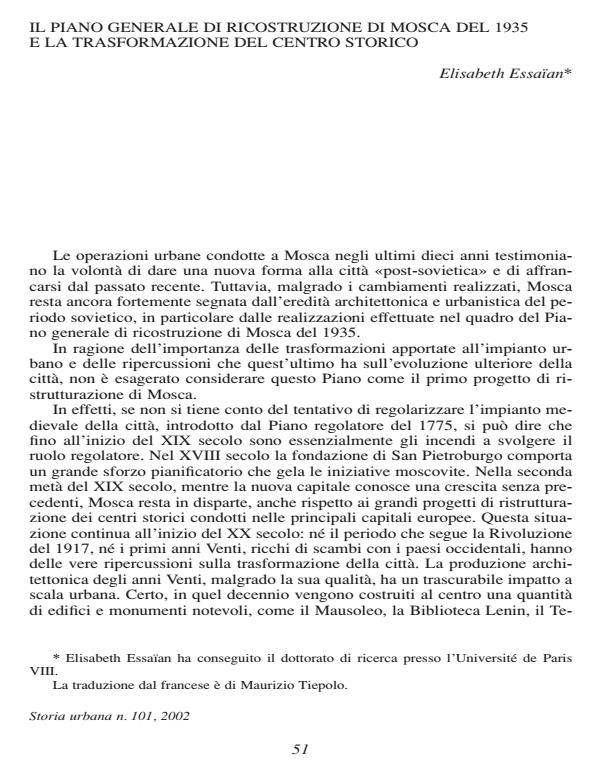Il piano generale di ricostruzione di Mosca del 1935 e la trasformazione del centro storico
Journal title STORIA URBANA
Author/s Elisabeth Essaian
Publishing Year 2003 Issue 2002/101
Language Italian Pages 0 P. File size 881 KB
DOI
DOI is like a bar code for intellectual property: to have more infomation
click here
Below, you can see the article first page
If you want to buy this article in PDF format, you can do it, following the instructions to buy download credits

FrancoAngeli is member of Publishers International Linking Association, Inc (PILA), a not-for-profit association which run the CrossRef service enabling links to and from online scholarly content.
The 1935 General reconstruction plan for Moscow is a significant episode in 20th century urban planning and, in particular, of Stalinist urban development. The Plan, due to the importance of the transformations to the urban layout and impact on further evolution of the city, may be considered as the first true Moscow reconstruction project. Due to the radical nature of the planned and partially actuated interventions, such a project was often compared with that designed by Haussmann in 19th-century Paris. This paper focuses on the «socialist reconstruction» of Gor’kij Street (Tverskaja), one of the main communications axes of the Soviet capital. Through a comparative analysis of various plans from various epochs, it is demonstrated that the actuation of the General reconstruction plan for Moscow was much less destructive of the urban fiber of the city than the plan had originally led people to believe it would be. In this case, existing buildings were implemented by the plan and public space gained the appearance of a successful, functional architectural and urban composition. In fact, even if only 5% of the buildings involved in the alignment or demolition plans were effectively demolished, the rubble was totally salvaged and reused in the construction of new housing.
Elisabeth Essaian, Il piano generale di ricostruzione di Mosca del 1935 e la trasformazione del centro storico in "STORIA URBANA " 101/2002, pp , DOI: